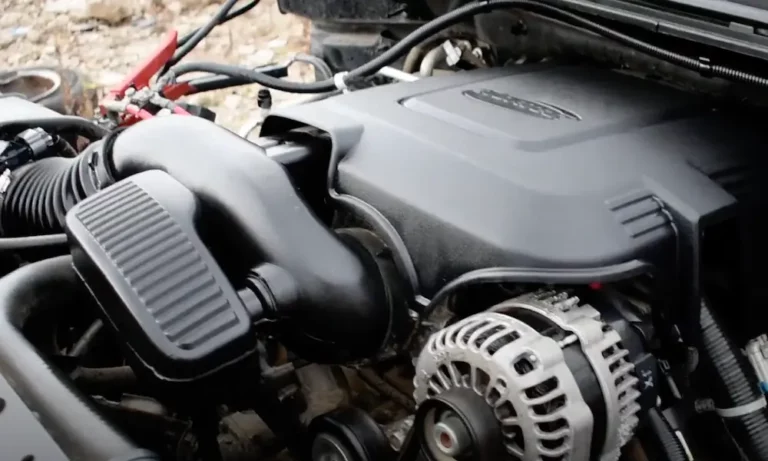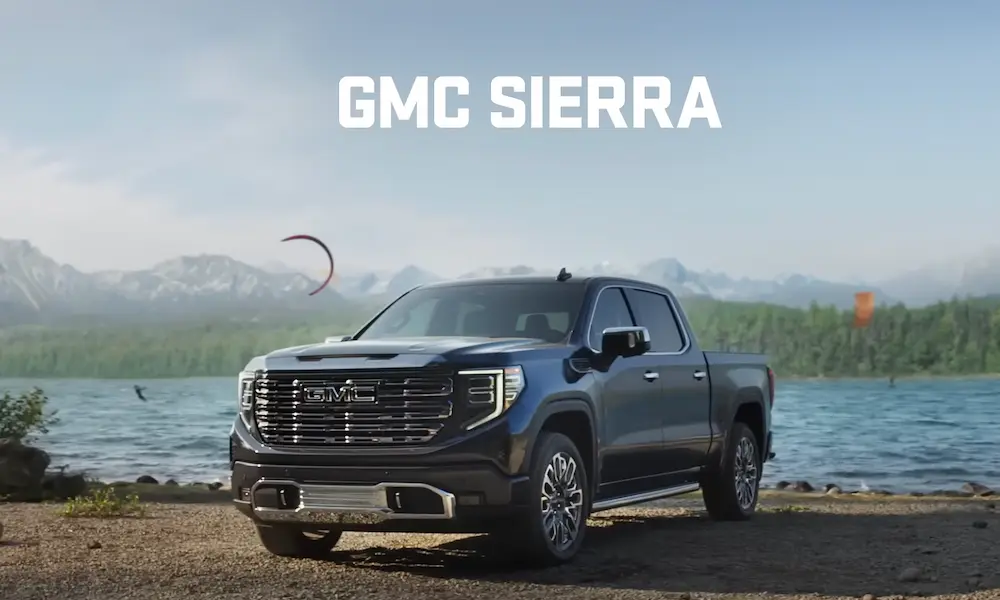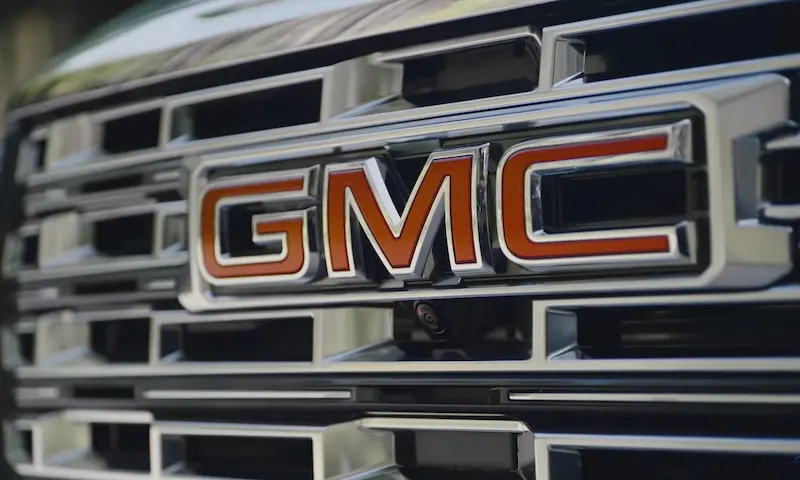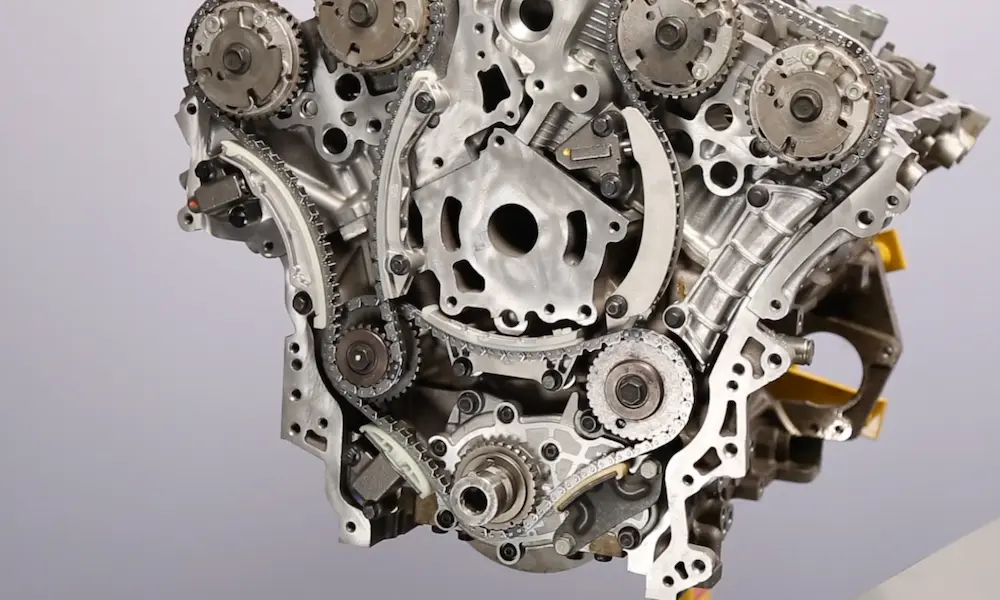Want to know what makes the L9H 6.2L engine tick? Whether you own a Cadillac Escalade, GMC Sierra Denali, or are just curious about this powerful V8, you’re in for a treat. This guide breaks down everything from horsepower figures to modification potential for one of GM’s most impressive truck engines.
What Is the L9H Engine?
The L9H is a 6.2-liter V8 engine produced by General Motors from 2009 to 2013. Part of GM’s renowned LS engine family, the L9H (also called the Vortec 6200) powered premium trucks and SUVs with an impressive 403 horsepower and 417 lb-ft of torque. Think of it as the truck version of the popular LS3 engine but with specialized components for heavy-duty applications.
What makes the L9H special is its combination of power, flex-fuel capability, and variable valve timing without using the sometimes-problematic Active Fuel Management system found in other GM engines.
L9H Engine Core Specifications
Let’s start with the essential numbers that define this powerful V8:
| Specification | Details |
|---|---|
| Displacement | 6.2L (376 cubic inches) |
| Bore x Stroke | 4.065 in. x 3.622 in. |
| Compression Ratio | 10.5:1 |
| Horsepower | 403 hp |
| Torque | 417 lb-ft |
| Block Material | Aluminum |
| Cylinder Head Material | Aluminum |
| Fuel Compatibility | Regular gasoline or E85 (Flex Fuel) |
| Years Produced | 2009-2013 |
The aluminum block helps keep vehicle weight down while still providing the strength needed for this high-output engine. With nearly 70 horsepower per liter, the L9H offered impressive performance for stock trucks and SUVs of its era.
Engine Block and Internal Components
The foundation of any engine is its block, and the L9H starts with a robust aluminum casting.
Block Specifications
The L9H block (casting #12584724) uses a deep-skirt design with 6-bolt main caps for excellent rigidity. The 6-bolt design (with four vertical bolts and two cross bolts) provides superior strength compared to 4-bolt mains, helping this block handle substantial power increases when modified.
Other key block specs include:
- Deck height: 9.240 inches
- Bore spacing: 4.400 inches
- Main journal diameter: 2.559 inches
- Cam-to-crank centerline: 4.914 inches
Rotating Assembly
The rotating assembly in the L9H is built for durability while maintaining reasonable manufacturing costs:
- Crankshaft: Cast iron (P/N 12588613) with 3.622-inch stroke
- Connecting Rods: Powdered metal I-beam style, 6.098 inches in length
- Pistons: Hypereutectic aluminum alloy with flat tops and valve reliefs
- Reluctor Wheel: 58X pattern for precise ignition timing
The cast crankshaft offers good strength for stock power levels, while the powdered metal rods provide a balance between strength and cost-effectiveness. For most street applications, these components are more than adequate, though serious performance builds often upgrade to forged components.
Cylinder Heads and Valvetrain
The cylinder heads are where the L9H really shines, with excellent flow characteristics that help deliver its impressive power figures.
Cylinder Head Design
The L9H uses aluminum cylinder heads (casting #5364 and #823) with these specifications:
- Combustion chamber volume: 68cc
- Rectangular intake ports with 257cc volume
- D-shaped exhaust ports with 87cc volume
- Valve angles: 15 degrees (compared to 23 degrees in older small-blocks)
- Intake valve diameter: 2.165 inches
- Exhaust valve diameter: 1.590 inches
These heads are essentially truck versions of the high-performance LS3 heads, offering excellent flow potential even in stock form.
Valvetrain Components
The L9H uses a modern, low-maintenance valvetrain:
- Hydraulic roller lifters (0.842-inch diameter)
- 7.385-inch pushrods
- 1.7:1 ratio roller rocker arms
- Beehive valve springs for higher RPM capability
The hydraulic roller design eliminates the need for periodic valve adjustments while providing improved durability compared to older flat-tappet designs.
Camshaft Profile
The L9H camshaft (P/N 12623065) offers a balance between power and drivability:
- Duration at 0.050″: 198° intake / 209° exhaust
- Valve lift: 0.500″ intake and exhaust
- Lobe separation angle: 115°
While this cam is relatively mild compared to performance aftermarket options, it provides good low-end torque for truck applications while still allowing the engine to rev freely.
Induction and Fuel System
The L9H breathes through components designed specifically for truck applications:
Intake System
- Truck-specific intake manifold with long runners for low-end torque
- 87mm throttle body (4-bolt mounting pattern)
- Electronic throttle control (drive-by-wire)
- Variable valve timing for optimized performance across the RPM range
Fuel System
- 54 lb/hr fuel injectors (P/N 12609749)
- Flex fuel capability (can run on gasoline, E85, or any mix)
- EV6-style electrical connectors on injectors
- Sequential fuel injection
The flex fuel capability was one of the key upgrades from the preceding L92 engine, allowing vehicles to run on ethanol blends without any loss of performance.
Engine Management and Electronics
The L9H uses GM’s advanced E38 Powertrain Control Module (PCM) with these features:
- 32-bit processing for precise engine control
- Drive-by-wire throttle control
- Support for variable valve timing
- Flex fuel compensation
- Advanced diagnostic capabilities
This engine management system continuously adjusts ignition timing, fuel delivery, and valve timing based on driving conditions, fuel quality, and environmental factors.
Vehicles Equipped with the L9H Engine
The L9H was reserved primarily for premium GM trucks and SUVs:
| Year | Make | Model |
|---|---|---|
| 2009-2013 | Cadillac | Escalade, Escalade ESV, Escalade EXT |
| 2009 | Chevrolet | Tahoe LTZ |
| 2010-2013 | Chevrolet | Silverado 1500 LT, LTZ |
| 2009 | GMC | Yukon Denali |
| 2009-2013 | GMC | Yukon XL 1500 SLT |
| 2009-2013 | GMC | Sierra 1500 Denali, SLE, SLT |
In these vehicles, the L9H was often paired with GM’s 6L80E six-speed automatic transmission, providing both strong acceleration and reasonable highway fuel economy.
L9H vs. Other GM 6.2L LS Engines
The L9H is often confused with similar 6.2L GM engines. Here’s how it compares:
| Engine | Years | Key Differences |
|---|---|---|
| L92 | 2007-2009 | Similar to L9H but lacks flex fuel capability |
| L9H | 2009-2013 | Added flex fuel capability to the L92 design |
| L94 | 2010-2014 | Similar to L9H but adds Active Fuel Management (cylinder deactivation) |
| LS3 | 2008-2017 | Car version with different intake, cam, and accessories |
Many enthusiasts prefer the L9H over the L94 because it doesn’t have Active Fuel Management (AFM), which can cause reliability issues at higher mileage. The absence of AFM is often considered a significant advantage for the L9H in terms of long-term durability and simplicity.
Performance Modification Potential
One of the L9H’s greatest strengths is its tremendous modification potential. Thanks to its LS architecture, there’s massive aftermarket support for enhancing performance:
Entry-Level Modifications
For modest power gains with minimal investment:
- Cold air intake (+10-15 hp)
- Cat-back exhaust system (+10-15 hp)
- Custom engine tuning (+15-25 hp)
- Headers (+15-20 hp)
These basic bolt-ons can push output to around 450-460 horsepower while maintaining excellent drivability.
Moderate Performance Upgrades
For those wanting significant gains:
- Camshaft upgrade (+30-50 hp)
- CNC-ported cylinder heads (+30-40 hp)
- Intake manifold upgrade (+15-25 hp)
- Higher compression pistons (+15-25 hp)
- Stroker kits to increase displacement to 6.7-7.0L (+50-80 hp)
With these modifications, 500-550 horsepower is easily achievable while maintaining reasonable street manners.
Extreme Performance Options
For maximum output:
- Forced induction (supercharger or turbocharger)
- Nitrous oxide systems
- Built bottom end with forged components
- Aggressive camshafts
- Race fuel capability
With forced induction, the L9H can produce 700+ horsepower with proper supporting modifications. The aluminum block can handle around 1,000 horsepower when properly reinforced and equipped with suitable forged internal components.
Common L9H Engine Problems and Solutions
While the L9H is generally reliable, there are a few issues to watch for:
Oil Consumption
Some L9H engines may develop increased oil consumption as they age. This is often related to valve guide wear or piston ring issues.
Solution: Using high-quality synthetic oil, regular oil changes, and avoiding extended periods of idling can help minimize this problem. Severe cases might require valve guide replacement or a ring job.
Lifter Failures
Hydraulic roller lifters can occasionally fail, especially in engines that see extended periods without oil changes.
Solution: Regular oil changes with quality oil and proper warm-up procedures help prevent this issue. Aftermarket lifters are available for those who experience recurring problems.
Timing Chain Wear
The timing chain can stretch over time, leading to timing-related issues and check engine lights.
Solution: Listen for chain rattle on startup, which is an early warning sign. Replacement timing chains and guides are relatively affordable and extend engine life significantly.
Maintenance Tips for L9H Engines
To keep your L9H running strong:
- Use high-quality synthetic oil (5W-30 for most applications)
- Change oil every 5,000-7,500 miles
- Use OEM or high-quality filters
- Maintain cooling system with the correct DEX-COOL antifreeze
- Replace spark plugs every 60,000-100,000 miles (NGK TR55 or equivalent)
- Check for signs of oil consumption regularly
- Listen for unusual valvetrain noise, which could indicate lifter issues
With proper maintenance, the L9H can easily surpass 200,000 miles of service life, making it one of GM’s more robust modern V8 engines.
L9H Engine Identification
Need to confirm if you have an L9H? Look for:
- 8th digit of the VIN: The number “2” indicates an L9H in applicable GM trucks/SUVs
- Engine code stamp: Located on the front of the block near the passenger side cylinder head
- RPO code: Check for “L9H” on the service parts identification sticker (typically in the glove box or on the spare tire cover)
Don’t confuse it with the L94, which looks nearly identical but has additional hardware for the Active Fuel Management system.
Beyond Stock: L9H in Performance Applications
The L9H has found its way into various performance applications beyond factory trucks:
- Engine swaps into older GM vehicles (often called “LS swaps”)
- Marine applications where the aluminum block offers weight savings
- Off-road racing trucks where reliability and power are critical
- Custom hot rods and street/strip vehicles
The strong aftermarket support makes the L9H an excellent candidate for these applications, with readily available mounting kits, wiring harnesses, and control systems.
The L9H Legacy
The L9H represents an important chapter in GM’s V8 evolution, bridging the gap between the earlier Gen III LS engines and the later direct-injected Gen V engines. Its combination of power, reliability, and flex-fuel capability made it a standout in its class during production.
For enthusiasts today, the L9H offers an excellent balance of performance potential, parts availability, and value. Whether you’re maintaining a stock L9H or building a high-performance variant, understanding this engine’s specifications and capabilities is the first step toward getting the most from this impressive V8.











